|
Mitsubishi A5M2
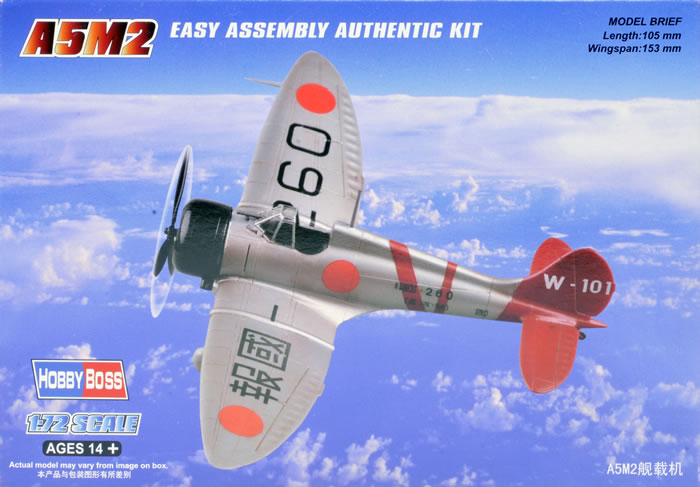
HobbyBoss, 1/72 scale
S u m m a r y : |
Catalogue Number: |
HobbyBoss Kit No. 80288 – Mitsubishi A5M2 |
Scale: |
1/72 |
Contents & Media: |
One clear and nineteen grey styrene parts, with decals for two subjects. |
Price: |
Available on-line from these and numerous other stockists worldwide:
Click here for currency conversion... |
Review Type: |
First Look. |
Advantages: |
Very innovative engineering of major parts breakdown, and attractively priced. |
Disadvantages: |
Very poor engine detail. Also numerous shape inaccuracies, some admittedly minor, that have a cumulative toll on overall appearance. |
Conclusions: |
This kit has probably the best breakdown of major airframe parts I have seen for single-engined monoplane fighter.
However, Hobby Boss’s kit is let down by poor R&D that failed to even ask why their CAD work resulted in different outline shapes to Fujimi’s A5M; the leading and well-regarded 1/72 Claude kit since 1995. There is also readily available information on the Claude that could have made all the difference in terms of this kit’s accuracy, had Hobby Boss bothered to use it. They could have had a winner on their hands, especially given their pricing and global distribution.
As things stand I can only recommend this kit for its ease of construction to those who are happy with a Claude look-alike. Just don’t place your Hobby Boss model alongside a Fujimi one; and you might get away with it. |
Reviewed by Mark Davies

Eduard’s Bf 110C/D Profipac Edition is available online from Squadron.com
The Mitsubishi A5M, Japanese Navy designation was "Type 96" was a carrier-based fighter aircraft. It was the world's first monoplane shipboard fighter and the direct ancestor of the famous Mitsubishi A6M 'Zero'. The Allied reporting name was Claude.
In 1934, the Imperial Japanese Navy prepared a specification for an advanced fighter, requiring a maximum speed of 220-mph at 9,840 ft and able to climb to 16,400 ft in 6.5 minutes. This 1934 specification produced designs from both Mitsubishi and Nakajima.
Mitsubishi assigned the task of designing the new fighter to a team led by Jiro Horikoshi (later responsible for the famous A6M Zero). The resulting design, designated Ka-14 by Mitsubishi, was an all-metal low-wing fighter, with a thin elliptical inverted gull wing and a fixed undercarriage, which was chosen as the increase in performance arising from use of a retractable undercarriage was not felt to justify the extra weight. The first prototype, powered by a 600-hp Nakajima Kotobuki 5 radial engine, flew on 4 February 1935. The aircraft far exceeded the requirements of the specification, with a maximum speed of 279-mph being reached. The second prototype was fitted with a revised, “un-gulled” wing, and after various changes to maximize maneuverability and reduce drag, was ordered into production as the A5M.
The aircraft entered service in early 1937, soon seeing action in pitched aerial battles at the start of the Second Sino-Japanese War. The A5M's most competitive adversary in the air was the Polikarpov I-16, a fast and heavily armed fighter flown by both Chinese Air Force regulars and Soviet volunteers
104 A5M aircraft were modified to accommodate a two-seater cockpit. This version, used for pilot training, was dubbed the A5M4-K. K version planes continued to be used for pilot training long after standard A5Ms left front-line service.
Some A5Ms remained in service at the end of 1941 when the United States entered World War II in the Pacific. US intelligence sources believed the A5M still served as Japan's primary Navy fighter, when in fact the A6M 'Zero' had replaced it on first-line aircraft carriers and with the Tainan K?k?tai in Taiwan. Other Japanese carriers and K?k?tai (air groups) continued to use the A5M until production of the Zero caught up with demand. The last combat actions with the A5M as a fighter took place at the Battle of the Coral Sea on 7 May 1942, when two A5Ms and four A6Ms of the Japanese carrier Sh?h? fought against US planes that sank their carrier.
In the closing months of the war most remaining A5M airframes were used for kamikaze attacks.
The above is an abridged extract from: Wikipedia
Previous 1/72-Scale A5M “Claude” Kits
In the past Claude kits have been pretty hard to find, despite the fact that quite number of brands have kitted this aircraft.
Probably the best known is Fujimi’s long-run injected kit that is typical of this brand’s 1990’s products. It is accurate, has fine surface detail, is crisply moulded, but has basic cockpit detail. It has been issued in a number of boxings covering the A5M2a and A5M4, each in a variety of markings.
A much earlier long-run injected kit by Nichimo dates from, I think, the 1960’s or early-70’s. A mate of mine has built this kit, and a very fair representation was the result despite its age; although I do not consider it to be as accurate overall as Fujimi’s kit.
Less well known injected kits include an A5M2 from Doyusha, which is simple assembly long-run kit released in 2103. I consider it to have several accuracy issues; but more on this brand later. Just released this year is a KA-14 (A5M prototype) by Model Graphix, although it is manufactured for them by Fine Moulds. This is a superb Fine Moulds product, and looks very nice when built. I suspect it may be limited to a one-off production run linked to a Model Graphix Magazine issue.
Chorozsy Modelbud also offered several KA-14 prototype versions as resin kits, and these are very nice too. Czech Master offered a resin A5M4 in its early days; this being a much more basic kit than we associate with this brand now. Cruver also offered a resin kit, but I know nothing more about this one. There have also been a couple of vac-forms from Extraplan and Mavi; but again I know nothing more about these.
Despite the above tally of different brand Claudes, all but the Fujimi, Doyusha, Chorozsy Modelbud, are I think out of production. Even so, these can be hard to find. So it has been left to Hobby Boss to achieve a consistent global coverage with their newly released A5M2 kit.
Overview
The kit comes in a top-opening box with a photo of the finished model on the box top, and the caveat “Actual model may vary from image on box”. This is an honest portrayal, but never as appealing as good artwork in my opinion. Most surprisingly, Hobby Boss labels the kit for ages 14+! I was building ill-fitting 1960’s Airfix and Revell kits by age 8 or 9, and would have loved the simplicity and fit of a typical Hobby Boss kit at that age. How times have changed! Maybe it is a cautionary approach to avoid US law suits for kids choking on small parts or something similar.
Hobby Boss can teach their rivals thing or two about packaging. The parts come in sealed plastic bags as you would expect, but the wings and fuselage are each twist-tied to their own card backing sheets for protection, whilst the clear pats come wrapped in plastic foam as well as a bag. The sprues are crisply moulded with acceptably fine attachment points. The instructions have a parts map, use well-drawn diagrams that are easy to follow, and have English and Chinese text. The painting and markings guide is well done in colour with four views per scheme. Colours are cross-referenced the paint codes for the Mr. Hobby, Vallejo, Model Master, Tamiya, and Humbrol paint ranges; which is a very helpful approach.
The Contents
Surface detail consists of acceptably fine recessed panel lines and exaggerated fluting of the control surfaces, for which I suggest a few coats of Mr. Surfacer to tone this effect down. Whilst ok, the surface treatment is not as refined as Fujimi’s.
I really like Hobby Boss’s engineering of the kit’s breakdown; in fact, it is the standout feature of this kit. The wings, lower fuselage and tailplane are all moulded as one piece.
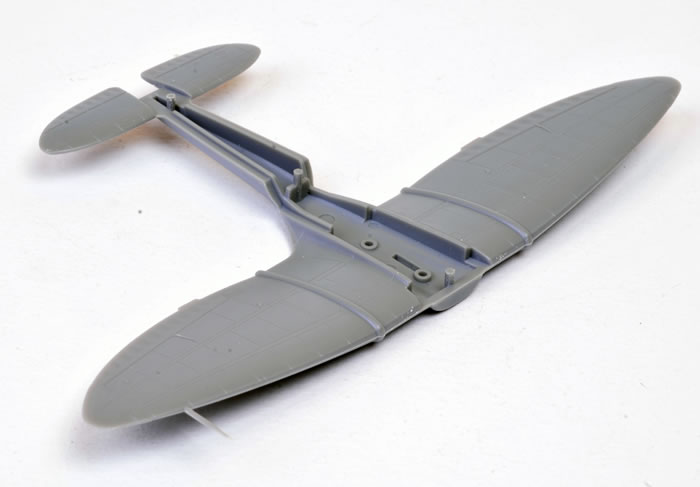
To this is added the upper fuselage (less cowling) and you have around 80% of the airframe assembled from just two parts, including the pitot and antenna mast!
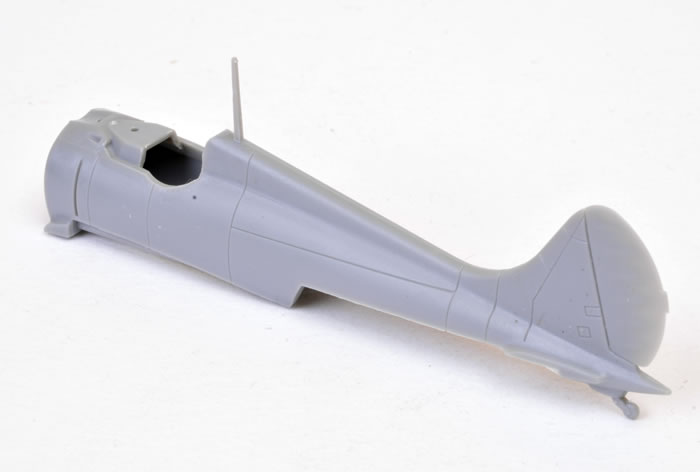
The fit is good, with just a simple seam running from the wing-root to tailplane leading edge on each side if the fuselage to deal with. There are slight mold seams to remove around the edges of the two parts, but this easier than cleaning up actual joins that would result with a conventionally engineered kit. Having built the Hobby Boss MiG-3, I can advise that their styrene has a very nice consistency to work with.
Cockpit detail is extremely basic, with a floor that includes simple lumps for rudder pedals, and undersized control column and no instrument panel. The telescopic gun-sight is also a bit simplified, as is the seat. Eduard offers a PE detail set for the Fujimi kit that would be adaptable to this one, and would do a lot to improve things. The windscreen is very clear and acceptably thin.
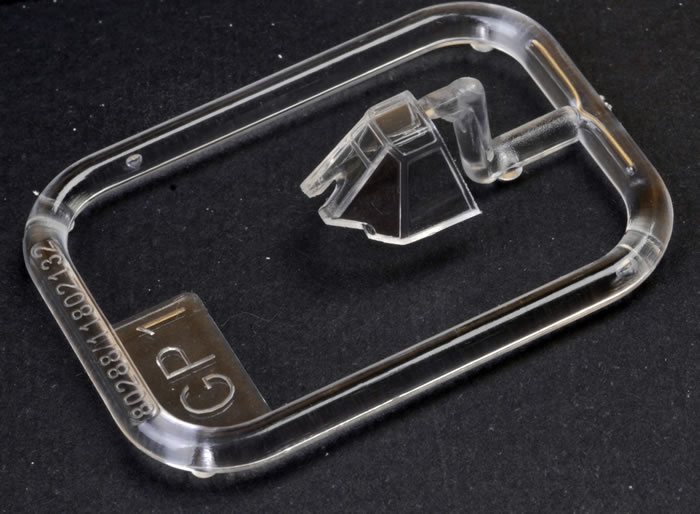
The engine and cowl are moulded as one piece, with the engine detail failing to even remotely resemble the real plane’s radial engine.

The two angled exhaust pipes are solid oval rods molded onto a circular inert that fits inside the cowl, and warrant drilling out to improve their appearance. The prop is quite finely moulded, but more on this and some other cowl-related issues later.
Not much remains to mention. There is the main undercarriage with separate wheels enclosed within their two-piece spats, a drop-tank, and an arrestor-hook. It goes without saying that I would expect this kit to be extremely easy to build.
Marking Options
Two colour scheme options are provided. One is an aluminum machine brightly adorned with red stripes, an overall red tail, and black cowl; although I have read that a protective varnish used by the IJN changed the tint somewhat from a a purely natural-metal appearance. The other scheme has green and earth-brown disruptive camouflage over grey undersides. No information is provided concerning units, location, or time period.
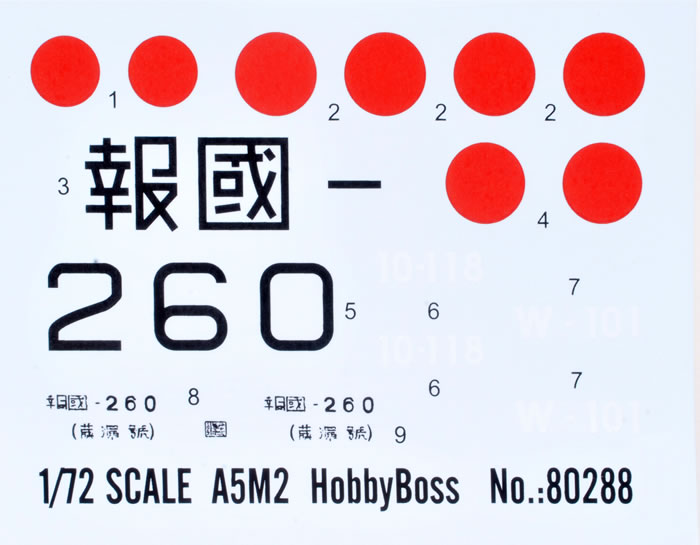
The decals appear to be very well printed and suggest good opacity. I seem to recall the only Hobby Boss decals I have used (from their MiG-3) proved good to apply.
Accuracy Assessment
I have already hinted at some accuracy issues to do with the engine, but sadly there is more to add. I have based my assessment on direct comparison with an example of Fujimi’s A5M4 kit that I own, and Mushroom Model Publication’s (MMP) Yellow Series guide on the A5M.
I have not read of any issues concerning the general accuracy of the Fujimi kit. Mine is an A5M4, but they also kit an A5M2a, which is generally similar except for differences in the engine cowl, drop-tank and windscreen shapes. I think that the Hobby Boss kit is representative of the A5M2b, which is externally very similar indeed to the A5M4. It still has a different windscreen like the A5M2a, but only a slightly different cowl shape and a similar drop-tank arrangement to the A5M4.
I am usually wary of trusting scale plans too much, but I place a good degree of faith in MMP’s for two reasons. Firstly, their book seems very well researched, and secondly, my Fujimi kit agrees very well with them. Given that I have found no criticism of the Fujimi kit’s accuracy, I assume that the same should probably hold true for MMP’s plans.
Based on the above logic here is a list of what I think is wrong with the Hobby Boss kit’s shape:
-
Excessive wing chord, with up 2-mm too much in the curved trailing edge areas.
-
The tailplane trailing edges do not taper quite enough towards the tips.
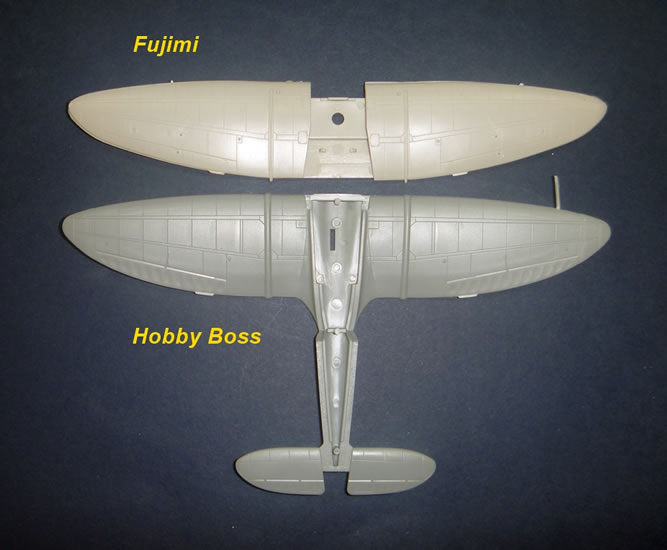
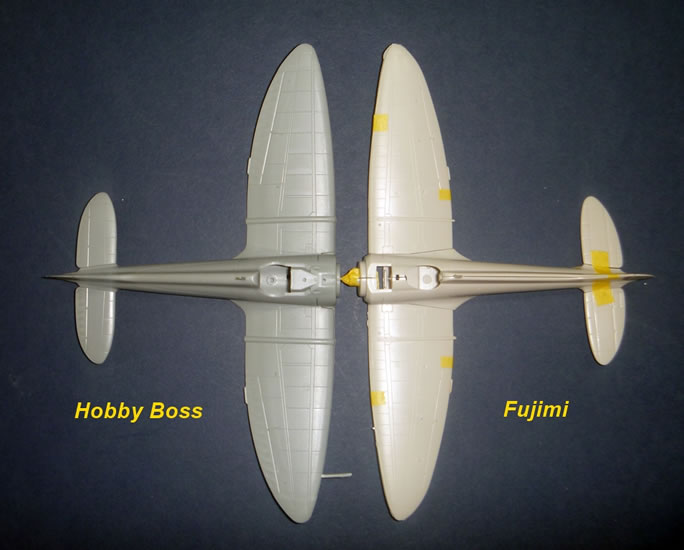
-
Oversized cockpit opening that does not taper enough towards the front, and features a spurious flattened area behind the windscreen.
-
Slightly oversized windscreen, which appears to be the late-style A5M2’s but has an incorrect extra horizontal frame-line at the top of the windscreen.
-
The leading edge of the tailfin is too scalloped out where it meets the fuselage spine, and the spine is not rounded enough in side-profile where it meets the cockpit just ahead of the antenna mast.
-
The rear of the wheels spats are too tapered.
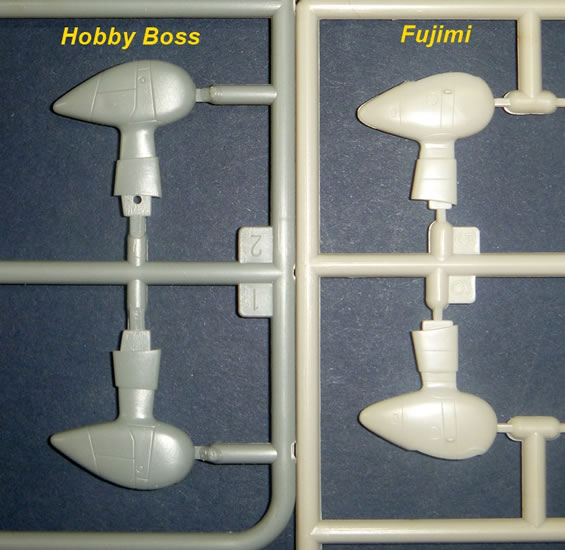
-
The cut-outs in the cowl lip to allow clearance for the machinegun bullets are as found on the A5M4, not the A5M2 which lacked this feature. Also, the cowl does not seem to taper quite enough towards the rear.
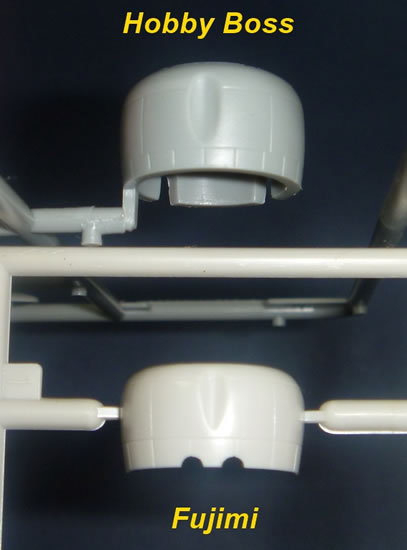


I accept that Hobby Boss compromises some details with simplicity of construction in mind, but the drop-tank aside, none of the above points fall into this category. What I find astounding is that they obviously did not bother to study Fujimi’s kit at their R&D stage, and question why their CAD renderings differed so much. Nor did they apparently bother to buy a copy of MMP’s affordable booklet for reference.
This kit could have blown Fujimi’s into the weeds; given its very competitive price, generally nice surface detail, superb parts breakdown, great fit, and fast assembly. Instead, we have a product that’s good only for kids and those not bothered with outline accuracy. Its main adult purpose would seem to be to serve as a quick-build “Claude mannequin” display variety of colour schemes; which is fine I guess. But I cannot but feel it is case of “Losing the ship for ha’porth of tar”; or in this instance, about an hour’s critical research and a few dollars expenditure.
Dare I ask? Why did Hobby Boss not follow the stereotypical Chinese path and just copy Fujimi’s kit? (And translate the shapes into their own parts breakdown to avoid copyright issues.) Had they done so we would all be singing this kit’s praises!
Well, I think that something similar may have happened, but using the wrong muse; as I can see some uncanny similarities between the Hobby Boss and Doyusha kits. I only have photos of the latter, but the appalling engine detail and cowl lip errors are identical on both kits, as these links to some HLJ images of the completed Doyusha kit illustrate: Engine & cowl, and full airframe. Both kits originate from 2013, and a business listing for Doyusha does say that they import a lot of products from China; so alternatively, Doyusha’s A5M2 may well be a re-box of the Hobby Boss kit!
This kit has probably the best breakdown of major airframe parts I have seen for single-engined monoplane fighter.
However, Hobby Boss’s kit is let down by poor R&D that failed to even ask why their CAD work resulted in different outline shapes to Fujimi’s A5M; the leading and well-regarded 1/72 Claude kit since 1995. There is also readily available information on the Claude that could have made all the difference in terms of this kit’s accuracy, had Hobby Boss bothered to use it. They could have had a winner on their hands, especially given their pricing and global distribution.
As things stand I can only recommend this kit for its ease of construction to those who are happy with a Claude look-alike. Just don’t place your Hobby Boss model alongside a Fujimi one; and you might get away with it.
Thanks to Creative Models Limited for the review sample.
Review text & dark-gey background images Copyright © 2014 by Mark Davies
Page Created 14 July, 2014
Last updated
14 July, 2014
Back to HyperScale Main Page
Back to Reviews Page |
